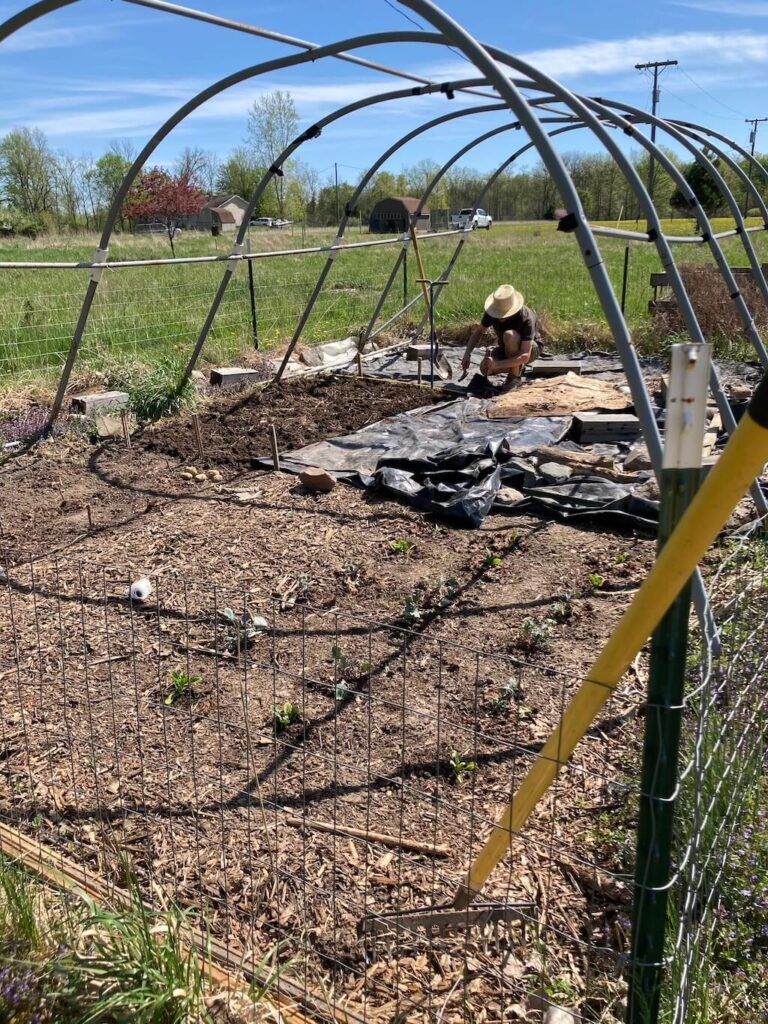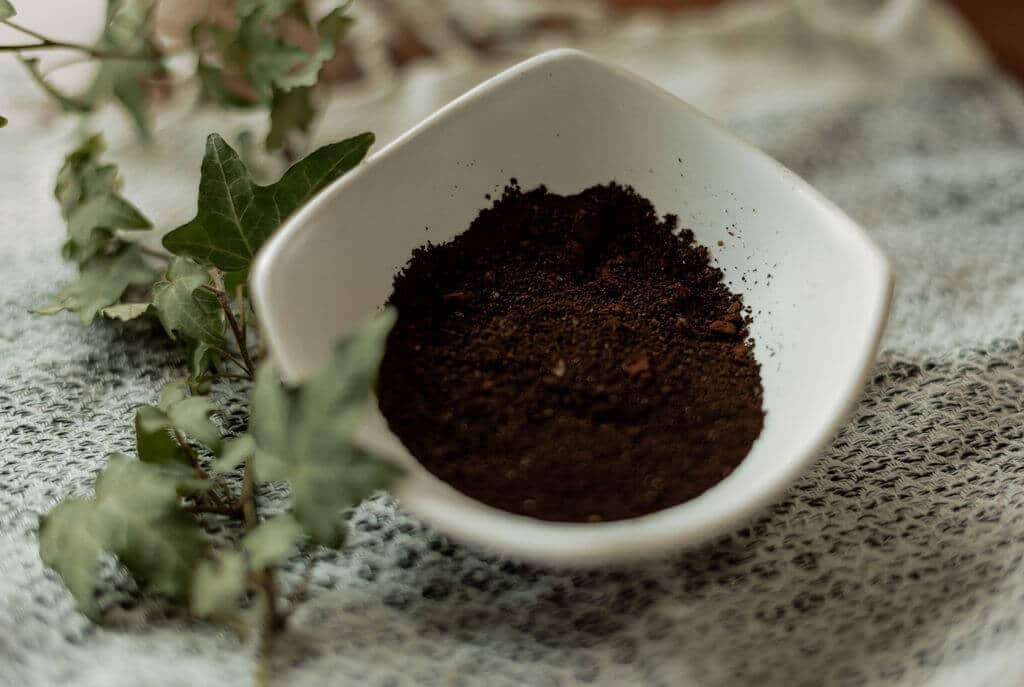Can You Compost Coffee Grounds? How to Benefit Your Garden
If you’re a daily coffee drinker, you may have started to wonder whether the trash can is really the best place for all of your used coffee grounds. Can you compost coffee grounds instead? Definitely! Composted coffee grounds are excellent for your garden, and it’s a more eco-friendly option than throwing all of those grounds in the trash, too.
Composting your coffee grounds is so easy to do. With coffee grounds, you don’t have to worry much about the ratios of your green and brown materials. Simply add your grounds in to your regular compost pile, or sprinkle them around nitrogen-loving plants.
Pin This Post for Later!

Can You Compost Coffee Grounds?
Coffee grounds are excellent for compost. In fact, they’re one of the easiest substances to compost. Coffee grounds contain essential nutrients that are excellent for plant growth when used as a fertilizer. They can also be used as a natural pesticide as well as repelling larger animals that might do damage to your garden, such as raccoons, dogs, and squirrels.
A thin layer of used grounds sprinkled around your plants or composted in your compost heap can be incredibly beneficial for helping your plants to thrive.
How to Compost Coffee Grounds
In order to create healthy compost, you need a good mix of brown and green materials. Too much of any one item or type of material in your compost bin will create an unbalanced and unhealthy mix that will actually harm your plants. The wrong mix of materials can wreck havoc for your composting process.
For example, too many nitrogen-rich materials can cause your pile to overheat.
And too many coffee grounds without enough brown materials can cause your soil to smell like rotten eggs or ammonia, or to become slimy.
On the other hand, too many brown materials without enough nitrogen fertilizer components can mean that your pile doesn’t heat up enough to actually decompose.
Are coffee grounds considered brown or green compost?
Coffee grounds are considered green material (even though they’re brown!).
Green compost material refers to compost like food scraps, spent coffee grounds, tea bags, grass clippings, and manure that were recently alive and still have some “life” left in them. These are typically nitrogen-rich materials.

The opposite of green compost material is brown compost material. This refers to compost that’s been dead for longer and is much less fresh. Brown compost includes materials like wood chips, wood ash, dry leaves, dead plants, hay, straw, pine needles, and sawdust.
To create a high quality compost pile, your total compost volume needs to be a good mix of brown and green materials. While it’s definitely not an exact science, you’ll want to aim for a higher amount of brown material than green materials in order to have a proper and healthy decomposition process. A ratio of 4:1 (browns to greens) is usually adequate.
Composting your coffee grounds in a compost bin
Perhaps the easiest way to compost the grounds from your morning coffee is to simply mix them in to your compost pile or bin. Just make sure that your pile also has an adequate supply of brown materials – dead leaves, wood, hay, etc. – as well.
We keep a small compost pail in our kitchen so that it’s convenient to collect daily food waste in small quantities and then take it outside to the compost pile every few days.
Make sure to mix your compost every once in awhile to help the materials break down and work together well. If you want to get serious about your composting strategies, a compost tumbler is a great tool for easier mixing.
You can compost both used or unused, fresh coffee grounds in your pile.
Composting coffee grounds without a compost bin
If you don’t have access to a compost bin or pile, you can still put your coffee grounds to good use in your garden or even with your house plants.
To do this, simply sprinkle your grounds around acid-loving plants! Oregon State University recommends that if you’re going to apply your grounds directly to the soil, you should work them in to a depth of 4 inches.
Coffee grounds have a slightly acidic pH, so plants that favor alkaline soil probably won’t do well with your old coffee grounds sprinkled about. So although you can definitely apply your ground coffee directly to indoor plants or to your garden soil, it’s important to know which plants will benefit from it and to be careful about affecting your soil pH too harshly.

Feel free to sprinkle a moderate amount of coffee grounds around plants such as:
- Carrots
- Peppers
- Eggplant
- Parsley
- Lettuce
- Potatoes
- Strawberries
- Blueberries
- Citrus trees
- African violets
- Hollies
- Money trees
- Peace lilies
- Succulents
- Azaleas
- Gardenias
- Hydrangeas
- Rhododendrons
How Much Coffee Grounds is Too Much for My Compost Pile?
Remember that coffee grounds increase nitrogen. While you shouldn’t stress out about the exact ratio of your compost pile, having too high a concentration of coffee grounds can have negative effects on your pile. This probably won’t be a problem unless you consume a LOT of coffee – and/or if your compost pile is really lacking in dry materials.
You should plan to have no more than 20% of your compost pile be coffee grounds.
Other Ways to Use Coffee Grounds
Pest deterrent
More than just a fertilizer, the grounds from your daily cup of coffee can be excellent for deterring pests. Slugs, snails, rabbits, cats, raccoons, and squirrels may be put off by even a small amount of grounds sprinkled around the base of your plants. This is an easy way to use up your waste while also keeping those pests away from your vegetable garden!

Earthworm attractant
An additional benefit of using coffee grounds on your garden soil is that they’re great for attracting earthworms! Earthworms are super beneficial for gardeners, as they aerate the soil and help to provide better drainage because of their tunnels and burrowing. Their casings are also a valuable addition to the soil. This organic matter provides nitrogen, phosphorous, and potassium. Spreading small amounts of coffee grounds on the soil surface is a great way to promote an earthworm-friendly environment.
FAQs
Where can you get coffee grounds for composing?
If you want more coffee grounds than your kitchen produces from your daily brew, don’t be afraid to check in with your local coffee shop to see if they can spare some! Coffee shops have no shortage of grounds and are usually very happy to give free coffee grounds away to gardeners who ask.
Since they often just throw grounds in the trash, you may have to provide a bucket for them to keep behind the counter and use for collecting your grounds. You can also call around to high-end coffee shops or health food stores like Whole Foods if you’re looking for organic grounds.

Can you compost coffee filters?
This question is really up to personal preference. Many coffee filters have been bleached, which worries some gardeners. However, some people believe that the bleach is all but gone by the time the filter gets to the compost pile. Paper coffee filters biodegrade quickly, and worms love them. They’re also a good brown compost ingredient. (You can also buy unbleached coffee filters if you’d like to avoid this predicament.)
If you’re looking for compostable organic materials only, you can switch to organic paper filters. Or, you can buy reusable filters and avoid this waste stream altogether!
Can you compost whole coffee beans?
Did you know that you can actually brew coffee with whole beans? If you use this method – or have just have whole coffee beans you need to get rid of – you can compost the beans whole. They’ll just take longer to break down.
Do you need a coffee grinder to grind your own beans?
If you want to buy whole bean coffee and grind it at home, a coffee grinder is usually the easiest way that produces the most consistent results. However, there are also ways to use basic kitchen tools that you probably already have to grind your beans at home.
Is the caffeine in coffee beans bad for the soil?
For most plants, the caffeine content in coffee beans isn’t enough to affect the soil negatively. Still, it may be a good idea to keep your coffee grounds away from seedlings and young plants, as it could reduce germination rates.
Keep in mind that fresh coffee grounds also have a much higher caffeine content than brewed or composted grounds. However, these fresh grounds – which are higher in both caffeine content and acidity – are the best option for pest deterrent.
What other kitchen scraps should I compost?
Once you start composting, it’s exciting to watch your compost pile grow. The use of coffee grounds is just one way to aid in creating good soil structure.
The good news is that creating nutrient-rich compost isn’t difficult once you understand the basics of soil amendment and composting. There are many different ways to compost and not necessarily a “best way”. Find a composting system that works for you, and then watch the natural process of decomposition fuel healthy soil and beneficial microbes for your summer garden!
Other popular kitchen scraps you can add to your compost pile include:
- Fruit and vegetable scraps
- Bread
- Pulp
- Egg shells
- Cooked rice
- Cooked pasta
- Tea leaves and tea bags
- Herbs and spices
Avoid composting:
- Meat
- Bones
- Dairy products
- Oil or grease
- Citrus
- Onions and garlic







